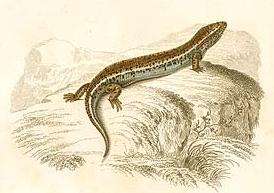Facts About Eyed Skink
The ocellated skink, scientifically known as *Chalcides ocellatus*, is a captivating reptile that inhabits diverse regions including Greece, southern Italy, Malta, North Africa, the UAE, Israel, Pakistan, India, and Sri Lanka. These skinks are relatively small, typically measuring 15 to 30 cm in length and weighing between 22 to 39 grams.
One of the most distinctive features of the ocellated skink is its unique appearance. They have small heads, cylindrical bodies, and five toes on each foot. Their name derives from the "ocelli" or eye-like spots that adorn their bodies, giving them a distinctive look. These skinks exhibit a variety of colors and patterns, making each one quite unique.
Ocellated skinks are agile creatures, well-adapted to arid environments. They share a close relationship with *Chalcides colosii*, which was previously considered a subspecies of *Chalcides ocellatus*. In the wild, their diet consists of various insects, arachnids, small lizards, and even their own young. In captivity, they are not too picky, and enjoy sweet fruits, boiled eggs, and meat.
Female ocellated skinks give birth to live young, typically having between 2 to 6 offspring at a time, a process known as viviparity. These skinks are highly adaptable and can thrive in various habitats, ranging from farmland to gravel deserts along the Mediterranean coast.
In terms of predator avoidance, ocellated skinks rely on their agility. They tend to seek refuge behind vegetation as their limb structure is not optimized for fast running or burrowing. Despite these limitations, they manage to survive and thrive in their diverse habitats, exemplifying their resilience as a species.

 North Macedonia
North Macedonia